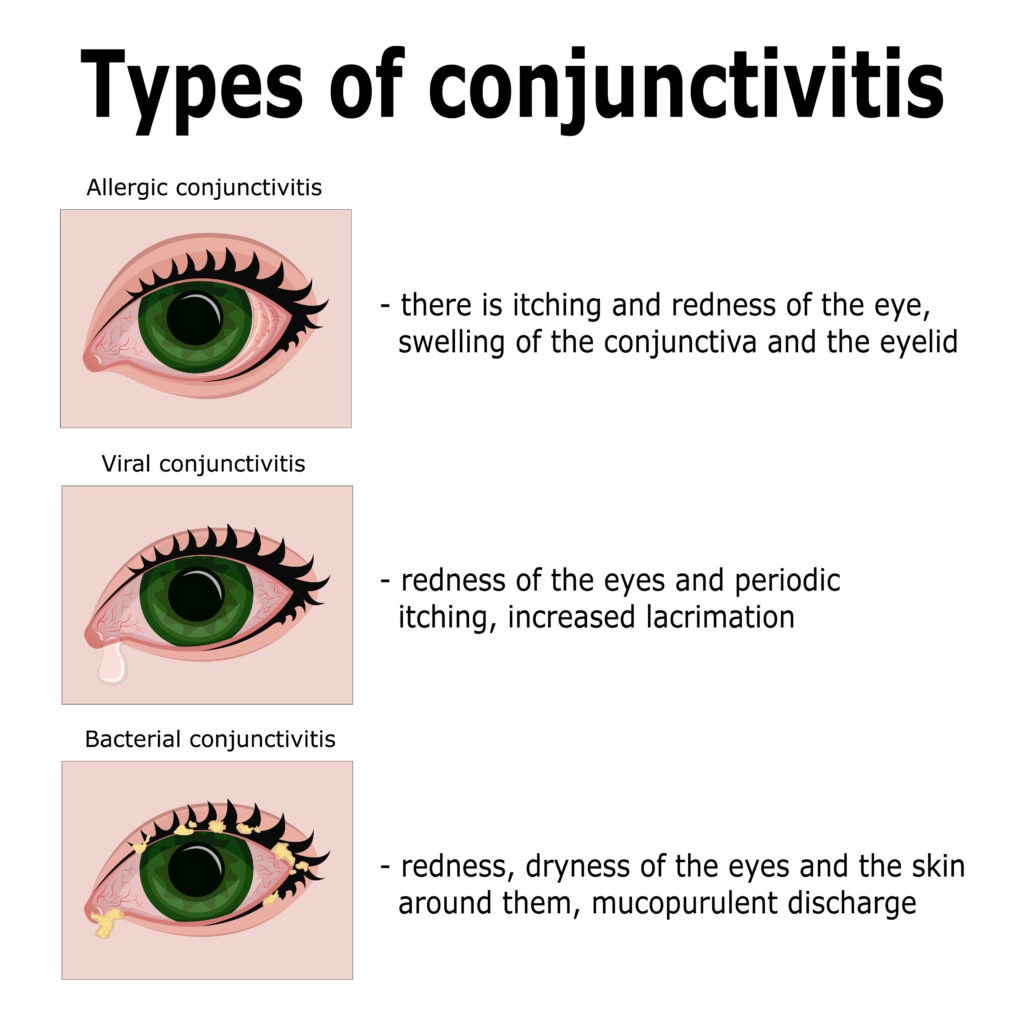Conjunctivitis VA Disability Ratings Explained

CCK Law: Our Vital Role in Veterans Law
Conjunctivitis is a common eye condition that affects many veterans. There are benefits, and health care options, available to veterans with conjunctivitis or conjunctivitis-related conditions.
What is Conjunctivitis?
Conjunctivitis occurs when the membrane surrounding the eyelid and eyeball becomes inflamed or infected. The eye usually becomes red, or crusty, which is why the condition is sometimes called “pink eye.”
There are multiple forms of conjunctivitis that can be categorized by their causes:
- Viral Conjunctivitis—Viral conjunctivitis is typically caused by a virus or a number of different viruses. This form can be highly contagious.
- Bacterial Conjunctivitis—Bacterial conjunctivitis is an infection caused by certain bacteria. It can be spread easily but is more common in kids than adults and occurs most often throughout the winter and early spring.
- Allergic Conjunctivitis—Allergic conjunctivitis occurs as the body reacts to allergens. Allergens could be pollen, dust, dander, or even medicines or cosmetics. This form is not contagious, and it occurs more commonly among people with other conditions relating to allergies, like asthma or eczema. It can occur seasonally.
- Conjunctivitis Caused by Irritants—This form of conjunctivitis is caused by a foreign body entering the eye. Conjunctivitis occurs as the eye gets irritated, and may be caused by smoke, dust, chemicals, fumes, or even contact lenses. This form is not contagious.
Symptoms of Conjunctivitis
- Pink or red coloring in the eyes
- Swelling around the eyes or eyelids
- Crusting around eyelids or eyelashes, particularly in the morning
- Increase in tear production
- Irritation
- Itching
- Burning
- Discharge of pus or mucus
Different forms of conjunctivitis can be linked to specific symptoms. For example, allergic conjunctivitis may occur with other symptoms of allergies like sneezing, sore throat, or asthma.
Diagnosis
To diagnose conjunctivitis, a doctor will usually physically examine the veteran. Analyzing the symptoms can not only allow the doctor to determine if the veteran has conjunctivitis, but also what form of conjunctivitis the veteran may have.
Laboratory testing may also be used to help diagnose conjunctivitis. This is less common, but it may involve sampling the discharge, usually pus or mucus, from the infected eye.
Treatment
There are various forms of treatments that can be used to treat conjunctivitis and to reduce symptoms. For example, a cold compress can be applied to the infected eye to reduce and relieve inflammation and dryness.
As contact lenses can irritate conjunctivitis, it can be beneficial to stop wearing them until the conjunctivitis has been fully treated. Additionally, eye drops, or artificial tears, can help soothe symptoms.
It can be important to see a doctor if you experience pain in the eyes, sensitivity to light, symptoms that do not improve, or a weakened immune system, perhaps as the result of an HIV infection or cancer treatment.
Conjunctivitis can take anywhere from one week to three weeks to be treated. If the conjunctivitis is recurring or lasts more than four weeks, it may be chronic.
VA Service Connection for Conjunctivitis
Veterans who experience chronic conjunctivitis as a result of their service may be eligible for service connection, and thereby VA disability benefits. To receive these benefits, veterans will usually have to submit three things to VA:
- An in-service event, injury, or illness;
- A current diagnosis by a medical professional; and
- A medical nexus, or link, between your in-service event, injury, or illness and your current diagnosis.
Veterans can submit their claim on VA Form 21-526EZ. This can be submitted via mail to the Evidence Intake Center or electronically through VA’s website.
How Does VA Rate Conjunctivitis?
Diagnostic Code 6018: Chronic Conjunctivitis
Veterans with chronic conjunctivitis, meaning that they currently experience conjunctivitis, can receive one of two ratings under Diagnostic Code 6018. Below are the criteria for each rating:
- 10%––The 10 percent rating is the highest rating anyone can receive for chronic conjunctivitis. It is given to veterans with active conjunctivitis, meaning that there are objective findings such as “red, thick conjunctivae, mucous secretion, etc.”
- 0%––The 0 percent rating is a non-compensable rating, meaning that there is no monetary compensation associated with it. However, this rating is still important because it establishes service connection for the veteran’s conjunctivitis. The 0 percent rating is given to veterans with inactive conjunctivitis. If the veteran’s conjunctivitis is inactive, they can receive a rating for the residuals, such as visual impairment or disfigurement, under Diagnostic Code 7800.
Trachomatous conjunctivitis is rated under Diagnostic Code 6017, where if the conjunctivitis is active, the veteran will receive a 30 percent rating, based on the level of visual impairment. If the conjunctivitis is inactive, it will be rated under Diagnostic Code 7800 like inactive chronic conjunctivitis.
Diagnostic Code 7800: Scars of the head, face, or neck, including burn scars; or other disfigurement of the head, face, or neck:
Diagnostic Code 7800 is rated as follows:
- 80%––Veterans who display tissue loss and “gross distortion or asymmetry of three or more features” such as the nose, chin, forehead, eyes (including eyelids) ears, cheeks, or lips; OR display six or more characteristics of disfigurement should receive a disability rating of 80 percent.
- 50%––This rating is given to veterans who experience tissue loss and gross distortion or asymmetry of two of the features listed above; OR have four or five characteristics of disfigurement.
- 30%––The 30 percent rating is given to those who present with tissue loss and gross distortion or asymmetry of one of the aforementioned features; OR two or three characteristics of disfigurement.
- 10%––Veterans who display one characteristic of disfigurement may receive a disability rating of 10 percent.
General Rating Formula for Diseases of the Eye
Conjunctivitis may also be rated under the general rating formula for diseases of the eye. Diseases of the eye are rated under 38 CFR § 4.79 with varying percentages for increased severity. Percentages are assigned based on the level of visual impairment due to the condition, or incapacitating episodes caused by the condition. Below are the criteria for each percentage rating:
- 60%— For diseases of the eye with documented incapacitating episodes requiring at 7 or more treatment visits for an eye condition during the past 12 months
- 40%— For diseases of the eye with documented incapacitating episodes requiring at least 5 but less than 7 treatment visits for an eye condition during the past 12 months
- 20%— For diseases of the eye with documented incapacitating episodes requiring at least 3 but less than 5 treatment visits for an eye condition during the past 12 months
- 10%— For diseases of the eye with documented incapacitating episodes requiring at least 1 but less than 3 treatment visits for an eye condition during the past 12 months

Compensation and Pension (C&P) Exams for Conjunctivitis
In order to receive a rating for conjunctivitis, VA may require the veteran to undergo a Compensation and Pension (C&P) exam. As conjunctivitis is rated based on the symptoms and whether the condition is active, a VA examiner will most likely need to look at the veteran’s eye in order to examine the condition.
This exam will likely be performed by a VA examiner or a VA-contracted examiner. During this exam, the examiner will usually physically examine the veteran, as well as ask about the veteran’s service and the relationship between the veteran’s conjunctivitis and their service. As conjunctivitis can be linked to other conditions, such as asthma, the examiner may ask about the relationship between asthma, or other condition, and conjunctivitis, particularly if the asthma is already service-connected.
The examiner should be knowledgeable about the information in a veteran’s c-file by the start of the exam. A c-file will typically contain any documentation that VA has regarding previously submitted claims, and the veteran’s medical and service records.
Veterans might also use a DBQ, or Disability Benefits Questionnaire, to bolster their claim. This is a form created by VA to allow veterans to address important aspects of their condition, like symptoms or potential causes.
It is crucial to attend your C&P exam. If you fail to attend, VA may deny your claim. To schedule the exam, VA will usually send a letter to your current address or call you on the phone. As such, veterans will want to be sure that VA has their most up-to-date contact information. If you miss a C&P exam, you should contact VA as soon as possible to reschedule, so that your claim does not get denied.

Military Burn Pits and Conjunctivitis
One of the more common causes of conjunctivitis in veterans is military burn pit exposure. Military burn pits are large areas of land that were used as part of the waste disposal protocol to deal with waste generated by military bases in areas throughout the Middle East.
The waste generated in these pits included plastics, rubber, oil, gasoline, medical waste, human waste, and much more. Though the practice was effective in reducing the waste, the smoke generated from these pits were toxic and caused many adverse health effects for those exposed.
In many locations were these pits were used, the air quality was also poor. The high level of allergens and pollutants in the air thus likely worsened the respiratory problems caused by burn pit exposure. Additionally, the winds carried this toxic air for miles beyond the immediate vicinity of the pits.
As burn pits release toxins and allergens into the air, these toxins and allergens can enter the eye and cause conjunctivitis. Additionally, since conditions like asthma, allergic rhinitis, sinusitis, and Sjogren’s Syndrome may be linked to conjunctivitis and can be caused by burn pit exposure.
Conditions Linked to Burn Pit Exposure:
- Asthma diagnosed after service
- Head cancer (of any type)
- Neck cancer (of any type)
- Respiratory cancer (of any type)
- Gastrointestinal cancer (of any type)
- Reproductive cancer (of any type)
- Lymphoma cancer (of any type)
- Lymphomatic cancer (of any type)
- Kidney cancer
- Brain cancer
- Melanoma
- Pancreatic cancer
- Chronic bronchitis
- COPD
- Constrictive bronchiolitis or obliterative bronchiolitis
- Emphysema
- Granulomatous disease
- Interstitial lung disease
- Pleuritis
- Pulmonary fibrosis
- Sarcoidosis
- Chronic sinusitis
- Chronic rhinitis
- Glioblastoma
Getting Help with VA Disability Benefits for Conjunctivitis
As conjunctivitis is a condition often caused by burn pit exposure, and VA does not recognize presumptive service connection for burn pit exposure, many veterans often struggle with winning their claims for conjunctivitis. The experienced team at Chisholm Chisholm & Kilpatrick LTD has helped many veterans suffering from conditions as the result of burn pit exposure fight for their benefits. Call our office today for a free case review to see if we can help you at 800-544-9144.
About the Author
Share this Post


